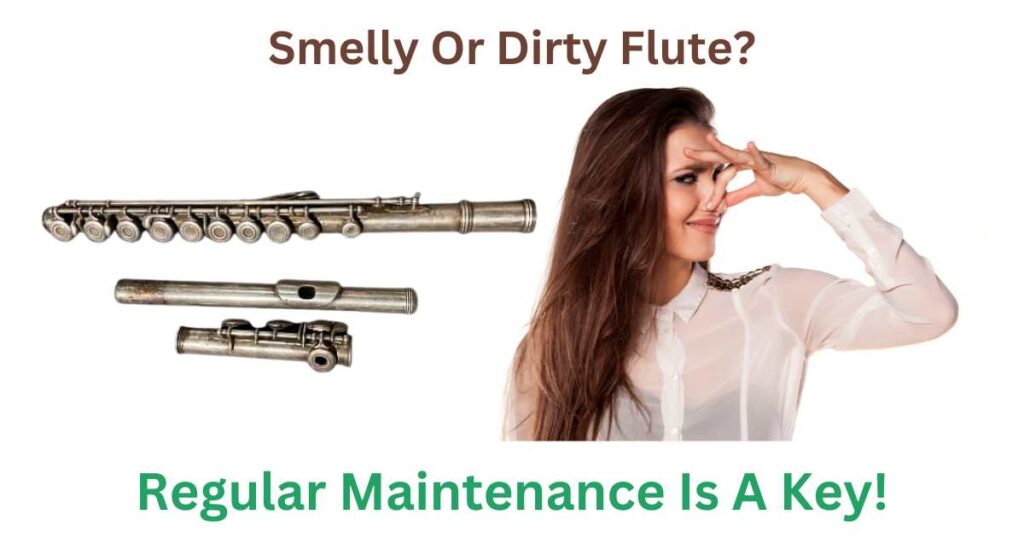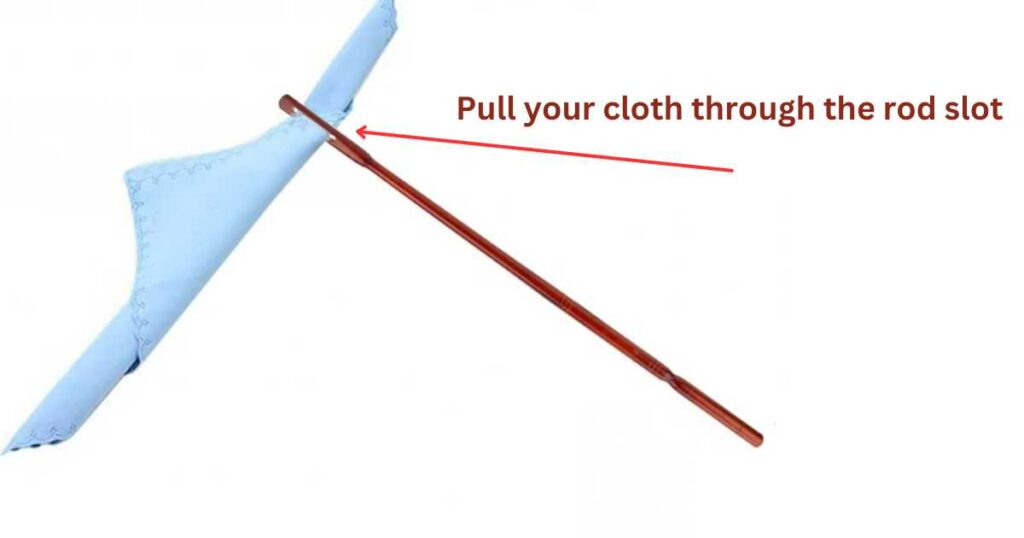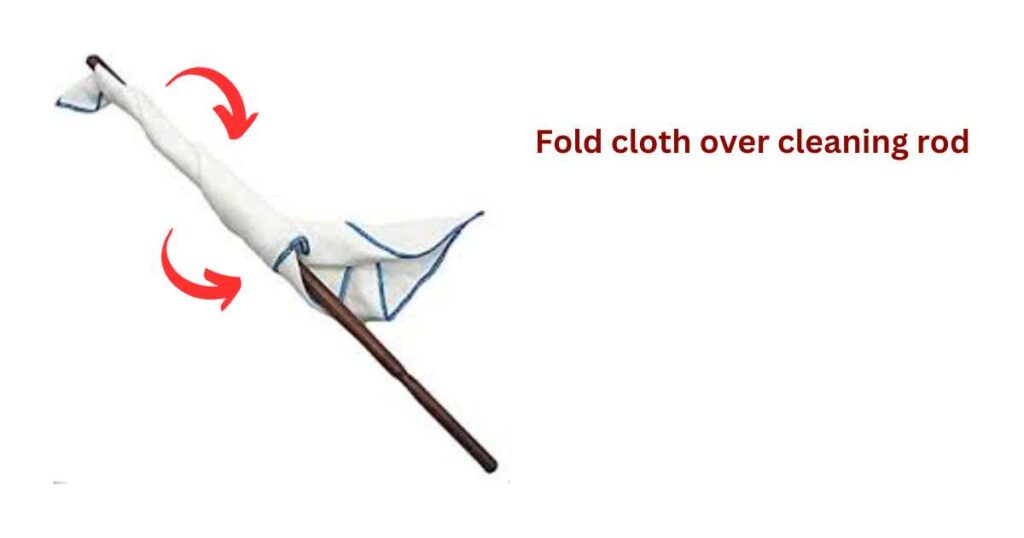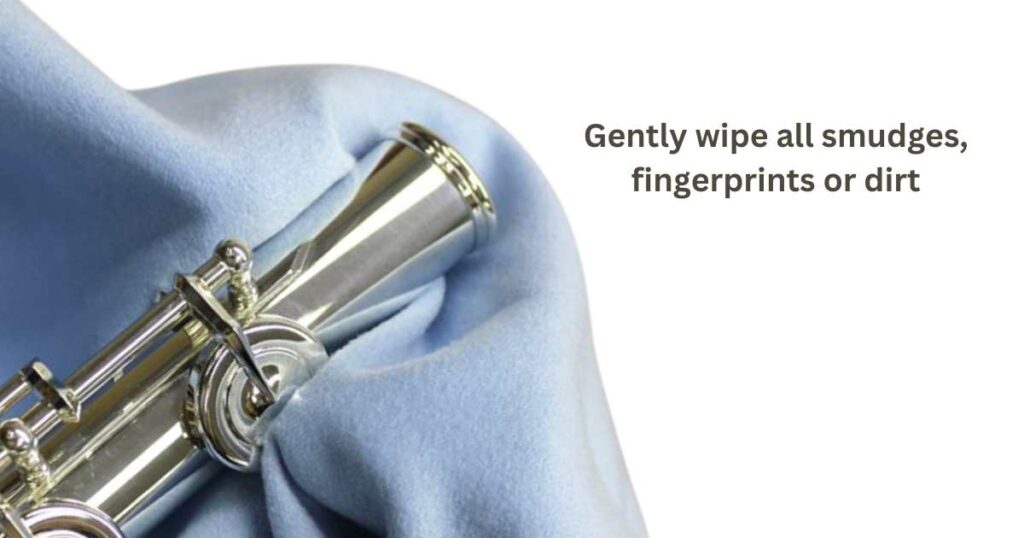How To Clean A Flute – Complete Guide With 5 Easy Steps

Are you tired of playing an unclean smelly flute, noticing declining sound quality or worried about a lifetime of your flute? It might just be time for it to get some good cleaning!!
Here, I will teach you how to clean a flute so it stays in excellent shape for years.
Regular Maintenance Is A Key!
Maintaining the tone and sound quality of a flute requires regular cleanings!! Any buildup of debris or moisture could (and will) harm its performance over time and shorten its lifespan — you give it a good cleaning after each (or every other) use.

Flute players need both a cleaning rod and a cloth. After each session, simply use the cloth to wipe down the interior of the flute. This helps to prevent potential damage when stored away in its flute case.
Failing to clean your flute regularly will leave unpleasant odors — similar to leaving damp swimsuits in a bag for several days!! Therefore, ensure you clean it regularly to eliminate unpleasant scents…
…And having a not-stinking flute makes you more enthusiastic to use — you’ll practice more time and improve overall! So yeah, it’s just maintaining a good condition that contributes to you as an instrumentalist.
Are you looking to advance your flute-playing abilities? Check out these Best 11 Online Flute Lessons
List Of All You Need To Clean Your FLute
Cleaning your flute doesn’t take any special equipment. Simply remember, keeping up with regular maintenance is important!
Just ensure all necessary items are at hand — here is a short list of basic items needed:
Cleaning Rod
A cleaning rod, made of plastic or wood (avoid metal rod), is the main tool that you use for your flute’s joints cleaning. Rods typically come with each instrument. But if your flute doesn’t already include one, find one that suits its length perfectly!
Gauze Cloth
Gauze cloths (absorbent fabric) keep a flute clean after playing — ideal for wiping away moisture and dirt from inside. It remains gentle enough on a flute’s delicate mechanisms.
Polishing Silver Cloth
A polishing cloth removes tarnish from metal parts on your flute’s interior (keys, plating, lip plate).
Cleaning helps remove finger marks, smudges and dirt build-up on the surface of your instrument.
Tissue Paper
Tissue paper quickly dries your flute after each use to avoid moisture build-up that could eventually cause corrosion damage. Regular usage helps preserve its condition for future performance!
Cotton Swab
Cotton swabs clean difficult spots on a flute easily, including in between tone holes and keys and around tone holes. They’re also handy for dislodging any stubborn dirt build-up.
Cleaning Kit
If something is missing from your list, no problem! An affordable clearing kit should do just fine.
These kits provide all the essentials for maintaining your flute. Compact and convenient, they are easy to carry wherever you go.
SkyNeo Flute Cleaning Kit
This lightweight kit provides your flute with the deep cleaning it deserves — portable yet effective!!
The flute cleaning brush provides easy, efficient care for hard-to-reach flutes with narrow bores. Boasting soft bristles and a long body, its bristle tips work to clean flute bowls.
Features
- 8 item flute cleaning set (including a cork grease)
- 13.6″ cleaning rod will accommodate any concert flute
- 14.2″ cleaning brush makes cleaning effortless!
Pricing
SkyNeo Flute Cleaning Kit
How To Clean A Flute Quickly – The Fastest Way
1 Carefully Unscrew Each Part to Disassemble Your Flute
Gently twist and pull carefully to separate a flute head joint from its body joint.

Hold the body gently (to avoid any damage) and detach the foot joint. Unscrew each piece starting from the bottom — work your way up!
2 Place a Soft Cloth Over The Cleaning Rod
Grab the square piece of cloth that can wrap 3-4 times around the cleaning rod.
Ensure the fabric you select is wide enough and not too thin or thick — to allow easy wrapping without falling apart. A regular cotton fabric will work!!

Simply pull your cloth through the slot at the end of your rod and spread it evenly along both sides!
3 Fold Cloth over Your Cleaning Rod
Secure a cleaning cloth around the rod to cover its entirety and catch any dust inside or around your flute keys — easy!

4 Clean All Three Flute Sections – Foot, Body And Head Joint (And Tennons)
Be sure that each flute section fits properly on each flute section with your cleaning rod.
You want to start with the foot joint by twisting the cloth to seal off and effectively clean the inside of it — gently twist and seal for best results.

To ensure a thorough cleaning, twist your rod as you move it inside.
After the foot joint, gently pass your rod’s end into the body joint and turn until it threads securely onto it.
Finally, gently slide the rod into your foot joint.
Simply give the rod a gentle turn and pull back and forth until you completely clean away all debris — take your time, do it nice and easy!!
Avoid touching keypads directly, getting any moisture or cleaning fluid on them or touching anything that might damage them — they are very delicate and could easily get broken by accident!!
Cotton swabs can help you access hard-to-reach spots like tight gaps and corners — difficult areas that you simply cannot clean with your rod or cloth.
5 Clean The Flute From The Outside
When cleaning the outside of a flute, use a soft lint-free cloth dampened slightly with water (never harsh chemicals!). Gently wipe until you clean all smudges, fingerprints or dirt.

Be sure to thoroughly clean the flute tenons to get rid of dirt and grime build-up.
Tenons connect all three flute joints (head, body and foot). Simply wrap a cloth tightly around a cleaning rod to thoroughly cleanse those tenons!
Check out this post with 8 Helpful Tips to Start Learning The Flute
How To Use Silver Polish and Flute Polishing Cloth
Silver cream won’t damage a flute in any way. Rather, its use helps extend and maintain its lifetime by keeping its silver plating shiny and resilient. The key is to keep it away from the pads and key mechanisms of your flute.
Liquid polish can safely be applied to the flat surface of the joint (as it doesn’t have keys).
Do not put the headjoint in water or use chemical dips to clean it. There’s a cork on one of your headjoint ends — should it become wet, this could create some issues later on down the line.
If you want to polish up the body joint of your flute, just be VERY cautious!! Dampen a cloth slightly with polish and gently wipe quickly over it — take extra precaution not to allow any leftover polish to dry onto your instrument!
When polishing key cups, only use a minimal amount of polish and AVOID touching any mechanism tubing.
Do not apply silver polish near the key (tone hole) mechanisms!! If traces of polish enter, this will require dismantling, cleaning and oiling your flute — all costly processes!
How To Completely Disinfect and Clean Your Flute
Chances are there won’t be any issues with playing a flute with minor surface scratches and corrosion.
Flutes tend to be pretty safe since we don’t actually put our mouths on them, but it is wise to regularly give your lip plate an alcohol wipe (Use rubbing alcohol wipes) — that should do the trick!
But what if you want to disinfect and cleanse your flute thoroughly? Over time, its appearance may become less pleasing to the eyes, or it might start to smell…
That’s a tricky situation. To fully clean and disinfect a flute, you need to take it apart, which calls for a trained tech and can cost quite a bit.
Technicians typically handle cleaning, oiling and adjustment services for flutes. This involves dismantling, cleaning, lubing, and reassembling with all its key levels and functioning correctly. They even swap worn pads out, although that usually adds additional charges.
Conclusion
Carefully maintaining and cleaning your flute regularly is VERY important for its long-term and quality usage. Follow these easy steps to keep it in its prime: clean after each use; give a thorough deep-clean every month; store in its case when not being played; avoid extreme temps/humidity/moisture exposure/and handle with care when possible.
Follow all these steps and your flute will provide beautiful musical sounds for years!
Feeling discouraged? Here are 17 Best Flute Players (with video performances) that will boost your motivation!!







